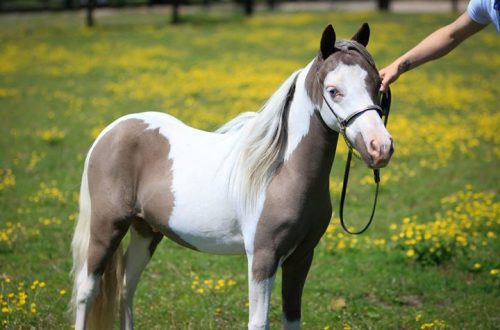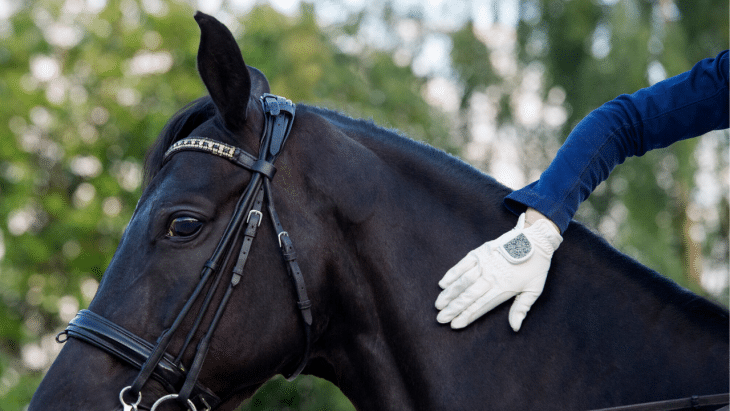
Relaxation for horse and rider: 35 tips for work in the saddle and on the ground
Relaxation for horse and rider: 35 tips for work in the saddle and on the ground
Relaxation is fundamental to everything we do with our horses. Its achievement can be seen as a challenge – the rider needs not only to relax the horse, but also to relax himself. But it is not easy to control yourself all the time. The moment the horse’s muscles tense up and the rider senses that it wants to run or goof off, he will most likely unconsciously join the horse, tensing his muscles as well. The reverse situation occurs when a tense rider makes the horse uncomfortable and he tenses up too.
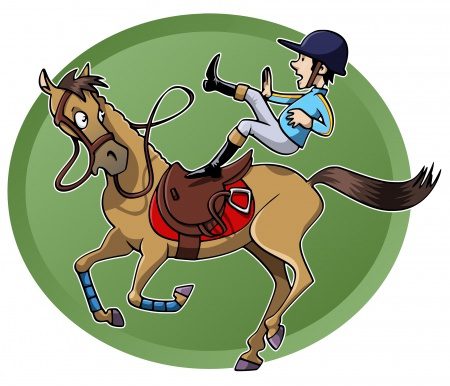
Thus, the conversation about relaxation is, in fact, a continuation of the old argument about the chicken and the egg. It really doesn’t matter what comes first. To break the feedback loop, someone has to be first.
Veteran rental gold training horses take on this role when working under beginner riders, but most horses are not so accommodating. The rider, as he gains experience, has to take responsibility for creating and maintaining relaxation in partnership with the horse. It is he who must learn how to break this closed loop of feedback by remaining relaxed and inviting the tense horse to relax with him.
In each of the cases where relaxation does not occur, you may need a specific set of methods. Below I want to share with you a series of tips to help you develop your own “relaxation program” that will help you and your horse.
Develop a short program to help you relax before you get to your horse and sit in the saddle. Choose a set of riding techniques that will help your horse warm up and relax before you start your main training session. Design a program that suits your fitness level and fitness level. Remember that the horse, like the rider, can be “different” every day, so think about backup options.
Relaxing a tense horse from the ground
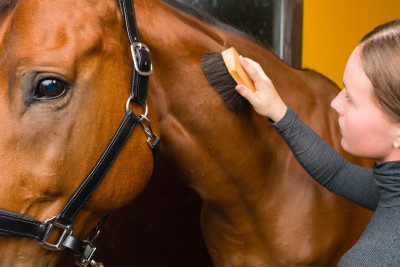
1. Try to relax and calmly, without showing nervousness, contact with the horse and take care of it (clean, saddle).
2. Once you are physically close to the horse, you must be mentally close to the horse. Put down your cell phone and focus on your horse. It is impossible to communicate with someone while remaining focused on the horse. Focus your attention on it.
3. When you groom and saddle your horse, be alert for signs of pain, stiffness, or other discomfort.
4. If your horse is usually tethered at the start of the ride, develop a routine for him to follow before getting into the saddle. Try to help the horse solve his problem (use exercises on the ground that will allow him to relax his muscles and warm them up, give him a short warm-up massage if necessary).
5. If your horse does not show respect or consideration when you prepare him and yourself for riding, then work him on the ground until he focuses on you before you mount. While working on respect, stay calm, be consistent.
6. If you are nervous or angry and cannot control your emotions, take your horse to a stall or let him go for a walk. Cool down, and only then return to it.
7. When leading your horse to the work area, be calm but collected, “rhythmic”, move at an even pace. Focus on the horse and make sure it also responds to your commands.
8. When going to competitions, try to arrive early so that you have time to lead your horse through new terrain. The horse should be focused on you. Make sure you show her any objects that she might find scary or out of the ordinary.
9. Do not confuse fatigue with relaxation. Focusing your horse on your controls is the key to relaxation. A horse that has been lunged until tired is likely to remain tucked under the saddle.
Relaxing a tense horse under saddle
.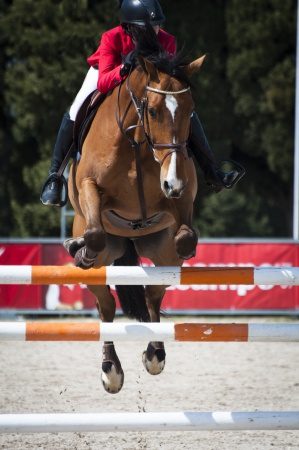
1. Ask the horse to yield to one leg, then the other.
2. Ask the horse to enlarge the circle by relaxing the neck and jaw on the outside.
3. Take a few steps in normal contact, then soften it by the same number of steps, then restore normal contact again by the same number of steps. Moving rhythmically, repeat this sequence several times.
4. Work on circles in a spiral, decreasing and increasing the diameter. Also work on the serpentine.
5. If the horse fusses or resists when you use your leg or reins, stop or slow him down with body work. Then use your thigh muscles to point the horse in the direction of movement, keeping the muscles of the lower back relaxed. Repeat.
6. Work a little on the lateral movement (leg yield, shoulder in, etc.) by moving the horse forward and keeping it straight.
7. Make a hind turn and/or a forehand turn to each side to encourage the horse to engage the hindquarters and stretch the muscles of the hind legs as they cross.
8. Focus on riding from back to front. When your legs are asking the horse to move to your stable hand (rein), feel the connection between front and back. This stimulates the horse’s back to work, it begins to relax and oscillate.
9. Perform walk-stop-walk transitions to put the horse into the aids. Then move on to walk-trot-walk transitions. Then trot-canter-trot. Then step-canter-step. Work on the transitions within the gaits as well.
10 Walk your horse on the cavaletti to get him to focus. Encourage the horse to stretch his neck and back on the cavaletti.
11 Reward even the smallest signs of relaxation by slightly reducing the pressure of the controls. The greatest reward for a horse is pressure relief.
Rider relaxation on the ground
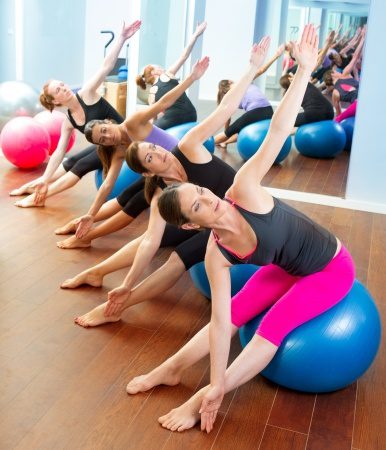
1. Sign up for yoga, tai chi, or dance classes to help you develop strong core muscles and learn how to feel and use different muscle groups.
2. Choose for yourself exercises that include work on balance and stretching, learn various breathing techniques. The development of strength and cardio load is not the most important thing.
3. Improve your balance by including exercises with a fitness ball and other balance-building tools in your program. Learn to balance by aligning your shoulders and hips.
4. Before you approach your horse and start grooming him, make sure you are relaxed. Check your breathing, soften your gaze, and consider whether you are tense. Find a technique for yourself that will help you relieve this tension. Count to 10 as you inhale, then exhale as well.
5. Pay more attention to your breathing. Breathe evenly when you clean the horse, saddle it, ride it. Pay attention to how your breathing affects your horse as you work on the ground. Learn to breathe evenly during anxious situations, do not hold your breath.
6. Mentally plan your ride before entering a competition. Build a strategy ahead of time. Plan for fallbacks. Repeat everything in your head until you can mentally demonstrate a successful performance consistently and confidently, without making mistakes. Be sure to stick to your plan.
7. Before the performance, find a quiet place where you can “breathe” – listen to your favorite music, meditate a little or do a breathing exercise, muscle stretching exercise, or discuss the final plan for your performance with a coach.
8. In case you don’t have time to follow the previous advice, develop some kind of gesture, a movement that will instantly help you relax. It can be very deep breathing followed by a long sigh. It can be a phrase like: “I can do anything!” or “All is well!” Make sure your signal is something that is always available to you, and not a lucky coin that you can forget in the pocket of other bridges!
Relaxation of the rider in the saddle
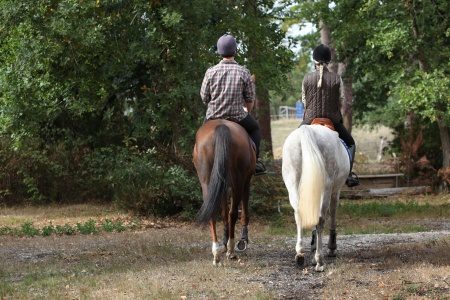
1. If, as a result of a fall or other incident, you begin to experience a feeling of fear that does not go away, work out on a self-carriage training horse. This can help you regain your self-confidence.
2. Work on lunging without reins or stirrups to develop better balance and improve your ability to follow your horse’s movements while remaining focused and relaxed.
3. If fear or doubt is preventing you from focusing or keeping you from breathing evenly, count rhythmically or sing a nursery rhyme that has a steady beat.
4. If while riding you notice that your muscles and joints are tense, take a breather and relieve this tension. Stretch your shoulders up to your ears and release them down. Pull your hips away from the saddle and slowly slide them back into place. While stopping, stretch your left hand to the toe of your right foot and vice versa. Reach forward towards the horse’s ears and back towards the tail with each hand. Work your wrists and ankles. Squeeze and unclench your fingers, rotate your hands.
5. At competitions, try to maintain the calm mood that you have achieved while brushing and saddling your horse. Focus on the horse, give the mobile phone to the trainer. Keep contact with other people to a minimum.
6. Quickly “scan” your body for any tension in your muscles and joints before you leave for the battlefield. Use the “tighten and relax” method to relieve tension.
7. If something doesn’t go according to plan while riding or on a route, use the relaxation button to release tension and focus. Don’t dwell on the mistake, don’t dwell on it. Redirect your focus to the next move, element, or jump.
We must become the “safest place” for our horse. In the horse’s mind, the only safe place is where he can relax. The work of relaxation should begin the moment you open the horse’s stall door and continue until you put him back in after all the work and grooming has been done. When you create a program for yourself that helps you and your horse stay relaxed, you will be the “place” for your horse to be.
The tips I have given do not add up to an exhaustive list. Discuss with your trainer or instructor other methods and ways to relax that will help you and your horse.
Nancy Vesolek-Sterrett (source); translation by Valeria Smirnova.




